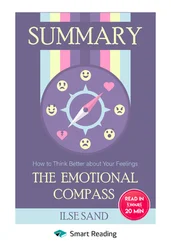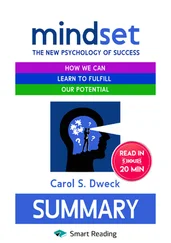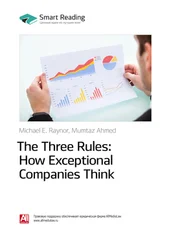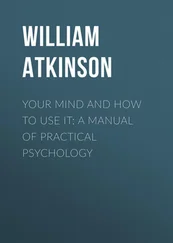Simmons, J., Nelson, L., & Simonsohn, U. (2011) . False-positive psychology. Psychological Science, 22, 1359–1366.
Simmons, R., Burgeson, R., Carlton-Ford, S., & Blyth, D. (1987) . The impact of cumulative change in early adolescence. Child Development, 58, 1220–1234.
Simonton, D. K. (2004) . Psychology’s status as a scientific discipline: Its empirical placement within an implicit hierarchy of the sciences. Review of General Psychology, 8, 59–67.
Sinaceur, M., Heath, C., & Cole, S. (2005) . Emotional and deliberative reactions to a public crisis: Mad cow disease in France. Psychological Science, 16, 247–254.
Singer, P. (2008) . The tragic cost of being unscientific. Project Syndicate. Retrieved December 31, 2008, from http://www.project-syndicate.org/ commentary/singer Singh, K., Spencer, A., & Brennan, D. (2007) . Effects of water fluoride exposure at crown completion and maturation on caries of permanent first molars. Caries Research, 41, 34–42.
Sivak, M., & Flannagan, M. J. (2003) . Flying and driving after the September 11 attacks. American Scientist, 91, 6–7.
Skeem, J. L., Polaschek, D., Patrick, C. J., & Lilienfeld, S. O. (2011) . Psychopathic personality: Bridging the gap between scientific evidence and public policy. Psychological Science in the Public Interest, 12, 93–162.
Skenazy, L. (2009) . Free-range kids. San Francisco: Jossey-Bass.
Skenazy, L. (2010, October 27). ‘Stranger danger’ and the decline of Halloween. Wall Street Journal, p. A19.
Skitka, L., & Sargis, E. (2006) . The internet as psychological laboratory. Annual Review of Psychology, 57, 529–555.
Slovic, P. (2007) . “If I look at the mass I will never act”: Psychic numbing and genocide. Judgment and Decision Making, 2, 79–95.
Smith, T., Polloway, E., Patton, J., & Dowdy, C. (2008) . Teaching students with special needs in inclusive settings (5th ed.). Boston: Allyn & Bacon.
Snowling, M. J., & Hulme, C. (Eds.). (2005) . The science of reading: A handbook. Malden, MA: Blackwell.
Spellman, B. A., & Busey, T. A. (2010) . Emerging trends in psychology and law research. Psychonomic Bulletin & Review, 17, 141–142.
Spitz, H. H. (1997) . Nonconscious movements: From mystical messages to facilitated communication. Mahwah, NJ: Erlbaum.
Stahl, S. A., & Kuhn, M. (1995) . Does whole language or instruction matched to learning styles help children learn to read? School Psychology Review, 24, 393–404.
Standing, L. G., & Huber, H. (2003) . Do psychology courses reduce belief in psychological myths? Social Behavior and Personality, 31, 585–592.
Stanovich, K. E. (2000) . Progress in understanding reading. New York: Guilford Press.
Stanovich, K. E. (2004) . The robot’s rebellion: Finding meaning in the age of Darwin. Chicago: University of Chicago Press.
Stanovich, K. E. (2009) . What intelligence tests miss: The psychology of rational thought. New Haven, CT: Yale University Press.
Stanovich, K. E. (2010) . Decision making and rationality in the modern world. New York: Oxford University Press.
Stanovich, K. E. (2011) . Rationality and the reflective mind. New York: Oxford University Press.
Sternberg, R. J. (Ed.). (2005) . Unity in psychology: Possibility or pipe-dream? Washington, DC: American Psychological Association.
Sternberg, R. J. & Kaufman, S. B. (Eds.). (2011) . Cambridge handbook of intelligence. New York: Cambridge University Press.
Sternberg, R. J., Roediger, H. L., & Halpern, D. F. (Eds.). (2006) . Critical thinking in psychology. New York: Cambridge University Press.
Strayer, D. L., & Drews, F. A. (2007) . Cellphone-induced driver distraction. Current Directions in Psychological Science, 16, 128–131.
Strayer, D. L., & Johnston, W. A. (2001) . Driven to distraction: Dual-task studies of simulated driving and conversing on a cellular telephone. Psychological Science, 12, 462–466.
Suls, J., & Bunde, J. (2005) . Anger, anxiety, and depression as risk factors for cardiovascular disease: The problems and implications of overlapping affective dispositions. Psychological Bulletin, 131, 260–300.
Surowiecki, J. (2010, August 16). Soak the very, very rich. The New Yorker, p. 33.
Swanson, D. (2001) . Nibbling on Einstein’s brain: The good, the bad & the bogus in science. Toronto: Annick Press.
Swanson, D. (2004) . Turn it loose: The scientist in absolutely everybody. Toronto: Annick Press.
Swets, J. A., Dawes, R. M., & Monahan, J. (2000) . Psychological science can improve diagnostic decisions. Psychological Science in the Public Interest, 1, 1–26.
Tager-Flusberg, H. (2007) . Evaluating the theory-of-mind hypothesis of autism. Current Directions in Psychological Science, 16, 311–315.
Tait, R., Chibnall, J., & Kalauokalani, D. (2009) . Provider judgments of patients in pain: Seeking symptom certainty. Pain Medicine, 10, 11–34.
Talbot, M. (2005, December 5). Darwin in the dock. The New Yorker, pp. 66–77.
Taleb, N. (2007) . The black swan: The impact of the highly improbable. New York: Random House.
Tanaka, H., et al. (2011) . The brain basis of the phonological deficit in dyslexia is independent of IQ. Psychological Science, 22, 1442–1451.
Taylor, A. K., & Kowalski, P. (2004) . Naive psychological science: The prevalence, strength, and sources of misconceptions. Psychological Record, 54, 15–25.
Taylor, B. (2006) . Vaccines and the changing epidemiology of autism. Child Care, Health, and Development, 32, 511–519.
Tetlock, P. E. (2005) . Expert political judgment. Princeton, NJ: Princeton University Press.
Thaler, R. H., & Sunstein, C. R. (2008) . Nudge: Improving decisions about health, wealth, and happiness. New Haven, CT: Yale University Press.
Thornton, E. (1986) . The Freudian fallacy. London: Paladin Books.
Tilburt, J. C., Emanuel, E. J., Kaptchuk, T. J., Curlin, F. A., & Miller, F. G. (2008, October 23). Prescribing placebo treatments: Results of national survey of US internists and rheumatologists. BMJ, 337, a1938 (doi:10.1136/bmj.a1938).
Todd, A. (2010, May). Behavioral science is the new green. APS Observer, pp. 23–24.
Toplak, M., Liu, E., Macpherson, R., Toneatto, T., & Stanovich, K. E. (2007) . The reasoning skills and thinking dispositions of problem gamblers: A dual-process taxonomy. Journal of Behavioral Decision Making, 20, 103–124.
Trout, J. D. (2008) . Seduction without cause: Uncovering explanatory necrophilia. Trends in Cognitive Science, 12, 281–282.
Tuerkheimer, D. (2010, September 20). Anatomy of a misdiagnosis. New York Times. Retrieved November 22, 2010, from http://www.nytimes. com/2010/2009/2021/opinion/ 2021tuerkheimer.html Tversky, A., & Kahneman, D. (1974) . Judgment under uncertainty: Heuristics and biases. Science, 185, 1124–1131.
Twachtman-Cullen, D. (1997) . A passion to believe. Boulder, CO: Westview. University of California, Berkeley. (1991, January). The 18-year gap. Berkeley Wellness Letter, p. 2.
Vanderbilt, T. (2008) . Traffic: Why we drive the way we do (and what it says about us). New York: Knopf.
Vazire, S., & Gosling, S. D. (2003) . Bridging psychology and biology with animal research. American Psychologist, 58, 407–408.
Vellutino, F., Fletcher, J. M., Snowling, M., & Scanlon, D. M. (2004) . Specific reading disability (dyslexia): What have we learned in the past four decades? Journal of Child Psychology and Psychiatry, 45, 2–40.
Waber, R., Shiv, B., Carmon, Z., & Ariely, D. (2008) . Commercial features of placebo and therapeutic efficacy. JAMA, 299, 1016–1017.
Wachs, T. D. (2000) . Necessary but not sufficient: The respective roles of single and multiple influences on individual development. Washington, DC: American Psychological Association.
Wade, C., & Tavris, C. (2008) . Psychology (9th ed.). Upper Saddle River, NJ: Pearson Education.
Читать дальше












